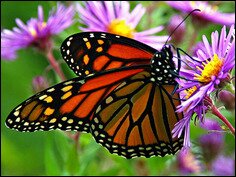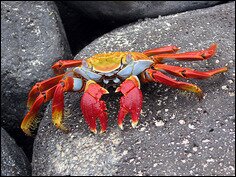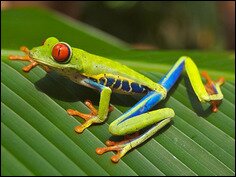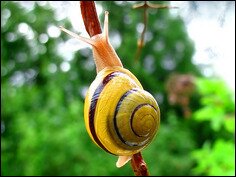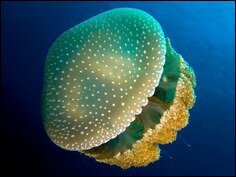What Is a Carnivore?
Posted In: Feeding Behavior.
Chances are that you’ve heard the term “carnivore” before, but do you know what it actually means? To be a carnivore is to be a creature that mostly consumes meat and flesh, and they are sometimes classified as predators.
 Lions feeding on a Cape buffalo. Lions need at least 7 kg (15 lbs) of meat per day. © Luca Galuzzi.
Lions feeding on a Cape buffalo. Lions need at least 7 kg (15 lbs) of meat per day. © Luca Galuzzi.
They are a big part of the food chain
Because of the dominance that goes along with the carnivore classification, a carnivore is a big part of the food web. In food webs, different animals that have various diets are classified in trophic levels; a carnivore being a part of the third trophic level. Alongside the organisms in this classification are omnivores and fungi.
Hypercarnivore
One sub-classification of a carnivore is a hypercarnivore, which means that meat accounts for around 70% of the animal’s diet. This means that for the other 30%, these hypercarnivores also rely on eating plants and fungi for other part of their nutritional needs. An example of a hypercarnivore is the sea star, which eats mostly oysters and clams for its nutritional needs.
 A Bengal Tiger (Panthera tigris tigris) eating an Indian Pangolin. Photo by Dibyendu Ash.
A Bengal Tiger (Panthera tigris tigris) eating an Indian Pangolin. Photo by Dibyendu Ash.
The largest carnivore
One of the largest animals on the planet is the blue whale, which is a carnivore. The whale can weigh up to 200 tons and can be up to 100 feet long. In their feeding process, which uses filter feeding to ingest krill, the blue whale will eat about four tons of krill each day. Among the largest land animal is another carnivore, the polar bear, and this mammal eats mostly seals. These two animals are not only at the top of the food chain, but are the biggest carnivores out there, on land and sea.
They keep the system balanced
While the violent image of carnivores may scare some, carnivores are actually a big part of a healthy and functional ecosystem. They help to maintain the right population levels for other groups in the food chain, such as herbivores and autotrophs, keeping everything in balance. They have a home range in which they hunt that can often span for hundreds of miles. One example of a carnivore with a wide home range is the Siberian tiger, which has been known to travel up to a thousand kilometers looking for prey.
 A carnivorous plant, the Venus Flytrap. Photo by Noah Elhardt.
A carnivorous plant, the Venus Flytrap. Photo by Noah Elhardt.
Overpopulation can be a problem
There have been cases in the wild where the disappearance of carnivores has had a huge negative effect on the ecosystem. An example would be the wolves and cougars that have a diet that includes deer, like the white-tailed deer. In some of these predatory environments, due to human hunting of the deer and cougars, these predators have largely disappeared. This means that the deer population has rapidly grown and that some deer can’t find enough food to eat, because of overpopulation. To find food, the deer will even venture into suburban populated areas, which can be dangerous for vehicles and other animals.
Balance is important
While carnivores are known for eating their prey, both herbivores and carnivores depend on their balance in order to survive. For example, as the herds of gazelles and zebras began to decline as a result of smaller roaming spaces for these animals, their population has declined, which correlates to the decline of the population of their natural predator, the African wild dog.
Herbivores and carnivores need each other
Carnivore is a wide classification when you consider the different animals that rely on mostly animal flesh, working to balance the ecosystem and serve as the king of the food chain. While herbivores are considered weak, it’s important to note that the entire environment carnivores live in is dependent on the supply of prey and they work together (in a funny kind of way) to create balance in the animal kingdom.
Also read on: Insectivores, feeding on insects.



